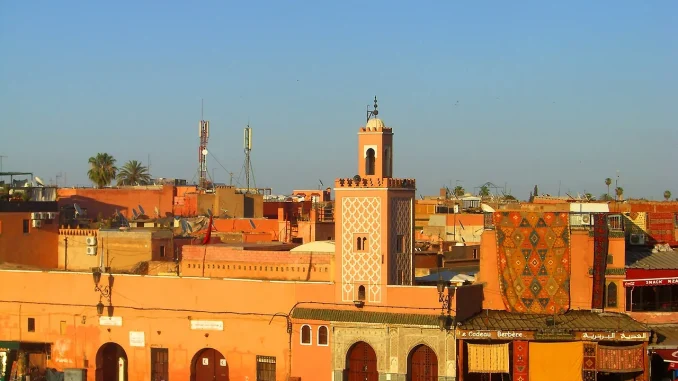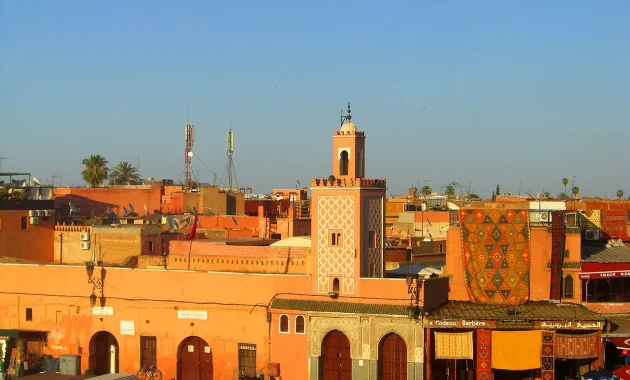
Morocco, a land that intertwines the beauty of culture and history, has long been shaped by its Imperial Cities. These cities—Fez, Marrakech, Meknes, and Rabat—stand as pillars of Morocco’s rich heritage, telling stories of empires that once ruled, architectural marvels, and intricate social fabrics. Each city offers an authentic glimpse into the past while highlighting the country’s diverse architecture and ancient traditions.
Fez: The Oldest of Morocco’s Imperial Cities
Fez, often referred to as the spiritual and cultural heart of Morocco, holds the title of the oldest imperial city, founded in the 8th century by Idris I. The city is renowned for its well-preserved medieval architecture, particularly within Fez el-Bali, the old medina, which is a UNESCO World Heritage site. Walking through the labyrinthine streets of Fez is like stepping back in time.
Architectural Marvels in Fez
The Al-Qarawiyyin Mosque and University, established in 859, is one of the world’s oldest operating universities. It is a masterpiece of Islamic architecture with intricate zellige tiles, horseshoe arches, and stunning wooden carvings. In Fez, traditional Moroccan craftsmanship is at its zenith, with artisans producing finely detailed ceramics, leather goods, and textiles that have been passed down through generations.
Another essential stop is the Bou Inania Madrasa, one of Morocco’s finest religious schools. Built during the Marinid Dynasty in the 14th century, it showcases stunning stucco work, green-tiled roofs, and a grand courtyard filled with geometrically patterned tiles. The delicate balance between art and spirituality makes Fez a city that resonates deeply with Morocco’s imperial past.
Marrakech: The Red City of the South
Marrakech, founded in 1062 by Yusuf ibn Tashfin, the leader of the Almoravid dynasty, is Morocco’s most famous imperial city. Known as the “Red City” due to its ochre-colored walls and buildings, it has long been a symbol of Moroccan power, wealth, and culture. The city has served as the capital for several dynasties, leaving behind a rich legacy of architecture and gardens.
The Architectural Grandeur of Marrakech
At the heart of Marrakech is the world-famous Jemaa el-Fnaa, the city’s bustling square filled with storytellers, musicians, and merchants. Nearby, you will find the stunning Koutoubia Mosque, one of the most important landmarks in the city. Its towering minaret stands at 77 meters high, making it the tallest structure in Marrakech. This 12th-century Almohad masterpiece represents the quintessential elements of Islamic architecture.
Another hallmark of the city’s imperial architecture is the Bahia Palace, a 19th-century marvel of Islamic and Moroccan design. The palace is a labyrinth of lavish gardens, ornate courtyards, and intricately decorated rooms adorned with carved cedarwood ceilings, mosaics, and stained glass windows. This fusion of traditional Moroccan and Islamic elements demonstrates the artistic sophistication of the city’s rulers.
Meknes: The Versailles of Morocco
Often overshadowed by its more famous counterparts, Meknes was the capital of Morocco during the reign of Sultan Moulay Ismail in the late 17th and early 18th centuries. Nicknamed the “Versailles of Morocco,” Meknes was transformed into a grand imperial city under Ismail’s reign, who sought to create a rival to the splendor of European capitals.

Imperial Splendor in Meknes
The most prominent feature of Meknes is the Bab Mansour, an imposing gate that serves as the entrance to the city’s imperial palace complex. Decorated with zellige tiles, elaborate stucco, and carved marble columns, Bab Mansour stands as a testament to the grandeur of Sultan Moulay Ismail’s ambitions.
One cannot discuss Meknes without mentioning the Herí es-Souani, a vast granary and stable complex that could house over 12,000 horses. It is an architectural feat that blends functional design with aesthetic grandeur, showcasing massive stone walls, vaulted ceilings, and sophisticated engineering techniques designed to regulate temperature.
Rabat: The Modern Imperial City
Rabat, the current capital of Morocco, blends its imperial history with modern governance. It was founded in the 12th century by the Almohad dynasty but came into its own during the French Protectorate in the early 20th century when it was selected as the capital. Unlike the other imperial cities, Rabat offers a mixture of modern urban planning and historic landmarks.
Architectural Highlights of Rabat
The most famous structure in Rabat is the Hassan Tower, an incomplete minaret that dates back to the 12th century. Intended to be the largest mosque in the world, it remains one of the most iconic symbols of Rabat’s past. Adjacent to the Hassan Tower is the Mausoleum of Mohammed V, a masterpiece of modern Moroccan architecture, where the former kings are buried.
The Kasbah of the Udayas, a UNESCO World Heritage site, is another must-see destination. The kasbah, with its blue-and-white painted streets, overlooks the Atlantic Ocean and offers panoramic views of the river Bou Regreg. Its fusion of Andalusian and Islamic architectural styles speaks to the city’s rich history of cross-cultural exchanges.
Conclusion: The Legacy of Morocco’s Imperial Cities
The Imperial Cities of Morocco—Fez, Marrakech, Meknes, and Rabat—are living testaments to the country’s rich history and architectural prowess. Each city, with its own distinct character, offers visitors an unparalleled journey through time, from the medieval alleys of Fez to the grandeur of Rabat’s modern boulevards. The intricate craftsmanship, historical depth, and cultural significance of these cities make them essential destinations for anyone looking to explore the essence of Morocco.